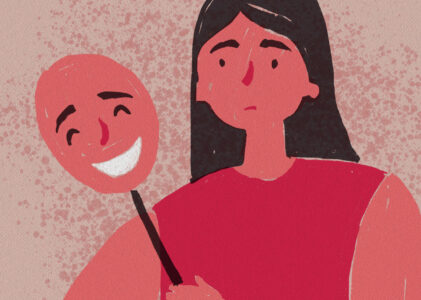Is this another case of the squeaky wheel getting the grease, old-fashioned gender bias, or something else?
Like many areas of study related to the human experience, our understanding of autism has evolved tremendously in the 100+ years since Swiss psychiatrist Paul Eugen Bleuler first coined the term in 1911.
Early autism researchers mislabeled it as a form of childhood schizophrenia and conceptualized autism as a “male” condition. Many even blamed autistic behaviors on so-called “refrigerator mothers,” asserting that a detached parenting style caused children to withdraw into themselves.
Thank goodness we know more now! Autism is not schizophrenia and chilly mothers don’t cause it.
Moreover, while many researchers hold fast to the idea that autism affects significantly more males than females (generally quoting a proportion of 4:1), recent research calls this proportion into question. Some experts now wonder whether the size of this discrepancy is legitimate or instead related to an inadequate understanding of how autism affects females [1, 2, 3, 4].
Are the numbers so heavily skewed because girls must act like boys with autism in order to get the diagnosis?*

Gender Bias in Autism Research
Until very recently, autism research focused on boys. So naturally, experts developed diagnostic criteria for autism based on clinical observations of boys. They then created diagnostic tools to rate behaviors mapping onto those criteria.
Given that almost everything we understand about autism centers on a male model of autism, it’s no wonder we don’t have a full picture of what it looks like in females.
Unsurprisingly, we have even less information about what autism looks like in gender-diverse people. This is especially relevant because a recent, large-scale study found that transgender and gender-diverse individuals are 3-6 times more likely to be autistic than cisgender individuals.
Why Proper Diagnosis Matters
Some unfortunate consequences of our incomplete picture of autism are that females with autism are often identified later in life than their male counterparts. They’re also frequently misdiagnosed with other conditions.
While the consequences for transgender and gender-diverse people are less clear, evidence suggests that they may be at greater risk of underdiagnosis for autism in comparison to their cisgender peers [5].
Receiving a later or inaccurate diagnosis (or no diagnosis at all) is harmful for a variety of reasons. These children and adults miss out on services intended to help them thrive, may receive inappropriate treatments, and may be at greater risk for developing mental health issues like anxiety and depression [6].
Just as important, they miss out on an opportunity for greater self-awareness and increased access to supportive communities of other folks who feel the same.
Clinical Psychologist Leigh Van Horn, PhD, who specializes in autism assessment, says “A lot of neurodivergent individuals find an autism diagnosis extremely validating. When adults learn of their neurodivergence in adulthood they often remark that they wish they had known sooner.”
What does autism look like in people who don’t fit the “model”?
Masking Behaviors
Evidence suggests that females with autism are more likely to engage in masking behaviors (e.g., mirroring others’ facial expressions, practicing scripted responses, imitating gestures) to try to fit in at school and other places in which they feel social pressure.
Dr. Van Horn says that it’s common for adult female patients to report “intentionally studying other’s behavior in order to learn how to fit in or communicate more effectively.” She goes on to say that “Many women will also remember an older female relative or friend teaching them to look at people’s noses when they are uncomfortable making eye contact.”
Masking may hide autism symptoms so effectively that it’s harder for teachers and other professionals to recognize signs of autism [7].
A variety of reasons may explain why females mask more often than males:
- They may feel more motivated to do so because of societal expectations (e.g., society may put more pressure on females to behave in neurotypical ways).
- They also may be better able to mask because of social factors (such as being socialized to focus on the importance of relationships) or biological factors (such as hormones or possible brain differences).
Internalizing Vs. Externalizing
Females with autism are also more likely than males to internalize their distress and experience issues like depression and anxiety rather than engage in external behaviors like aggression, hyperactivity, reduced prosocial behavior, and increased repetitive/restricted behavior and interests [8]. As a result, it’s much easier to overlook females’ distress.
Subtler Symptoms
Some researchers and clinicians wonder if females are more likely to develop obsessions and rituals that don’t fit our model of autism-related behaviors because they don’t seem “odd” or significantly disruptive. For example, if a girl obsesses over fashion, her interests might not raise concern, unlike a boy who obsesses over train schedules.
Through her work, Dr. Van Horn has noticed that females often express autistic symptoms in more socially acceptable ways. In particular, she says “The passionate interests of girls/women tend to be broader, often relational, and typically more socially acceptable (i.e, psychology, mythology, social justice, reading, makeup/fashion, etc.).” While their interests may be less narrow or unusual, “They still research and talk about these topics extensively.”
In a similar manner, Dr. Van Horn says that girls and women may twirl their hair or pick their skin instead of engaging in more disruptive repetitive behaviors that align more closely with a traditional model of autism symptoms.
Moving Toward Gender Inclusion
While Dr. Van Horn recognizes that some females express autism symptoms differently from the traditional model, she thinks we should avoid forming an alternate model based on sex or gender. Dr. Van Horn believes a framework defined by a “high-masking presentation” would more accurately describe people with autism who don’t fit the traditional model. She explains, “It is great that more cis girls/women are being identified as autistic and experiencing this as validating. However, I have also seen some cis and trans men that fit this high-masking presentation of autism.”
Given the overlap between gender diversity and autism, it’s especially important that we learn to recognize signs of autism in transgender and gender-diverse populations. It’s also important that we learn to recognize signs of masking to advocate for people in our lives who may benefit from autism assessment and/or therapeutic services.
How to recognize signs of masking
Here are some common signs you might notice in someone close to you.
- Seeming to markedly change character (or meltdown) when going from home to school/work
- Feeling exhausted after being at school/work or other public places
- Hiding or minimizing interests
- Scripting conversations
- Putting on an act in social situations
- Practicing facial expressions and body language
Sadly, people with autism may feel that they must engage in masking to avoid negative consequences from neurotypical people around them. High levels of masking come at a significant cost to mental health and are associated with increased rates of depression and anxiety.
If you recognize signs of significant masking, anxiety, or depression in yourself or a loved one, consider talking to your primary care doctor or a licensed mental health professional to see if you could benefit from professional help.
Next Steps
If you or someone you love would benefit from autism assessment, ABA therapy (for ages 2-15), or mental health treatment in Tennessee contact Athena Care.
One of our Care Coordinators will help you get the care you need.
*Note: In this article, we use words like “girl” and “female” interchangeably to promote a conversational tone and to reflect the developmental stage of the participants in these studies. In addition, many studies don’t include information about the gender identity of participants.
We recognize that “girl” refers to the social construct of gender, while “female” refers to natal sex. We support gender and intersex inclusion and hope our terms don’t cause offense.
Gender Diverse: This is an umbrella term to describe gender identity, expression or perception that doesn’t conform to stereotypical gender norms.
Transgender: This refers to a person whose sense of gender identity does not correspond with the sex they were assigned at birth.
Cisgender: This refers to a person whose sense of gender identity corresponds with the sex they were assigned at birth.

Rachel Swan, MS
Editor
Rachel has a Masters of Science in Clinical Psychology from Vanderbilt University, where she spent 16 years as a Research Analyst in the Psychology and Human Development Department.


